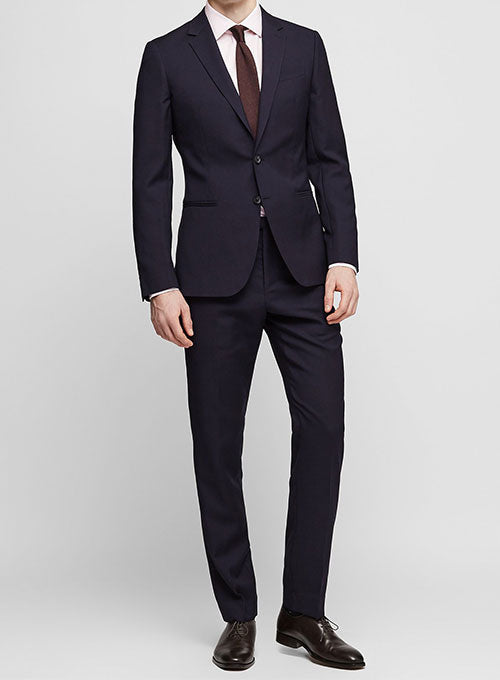Recognizing the Tailoring Process: From Material Choice to Last Fitting for the Suitable Wardrobe
The customizing procedure is a complex interplay of art and scientific research, starting with the crucial decision of fabric option and finishing in the specific changes of last fittings. Each fabric kind brings special top qualities that affect not only the aesthetic charm however likewise the garment's durability and suitability for different events. Comprehending the subtleties of customizing methods can elevate one's closet to unprecedented levels of class. As we discover these elements additionally, one must take into consideration just how also the tiniest details can substantially impact the overall result of one's individual design.
Value of Material Selection
Picking the ideal textile is important in the customizing procedure, as it straight influences the convenience, durability, and general aesthetic of the last garment. The choice of fabric establishes the structure for the garment's performance, performance, and design. Different materials have distinct residential or commercial properties, such as breathability, stretch, and weight, which can significantly influence exactly how the garment drapes and fits the body.

A customized item made from an appropriate fabric not just showcases craftsmanship but likewise raises the user's confidence. Comprehending the subtleties of textile selection is paramount for any tailoring endeavor. It makes sure that the end product not just fulfills the visual desires of the client however additionally lines up with useful demands, consequently accomplishing a harmonious balance in between kind and function in the tailored closet.
Kinds Of Fabrics and Their Uses
Comprehending the various types of textiles offered is crucial for making informed decisions during the tailoring process. Each fabric possesses distinct attributes that dictate its suitability for details garments and celebrations.
Its convenience enables it to be tailored into everything from shirts to dresses. Its all-natural elasticity helps garments preserve shape over time.
Silk shows high-end and is lightweight, making it best for eveningwear and fragile blouses; however, it calls for cautious handling due to its delicacy. Linen, with its distinctive finish, is a preferred choice for cozy climates, giving a crisp and airy feeling, however it wrinkles easily, which might affect the garment's look.
Synthetic materials, such as polyester and nylon, deal toughness and resistance to wrinkles, making them ideal for everyday wear and active apparel. Understanding these textile kinds and their properties allows for much better decision-making, ensuring that each customized item not only fits well however additionally aligns with the intended purpose and event.
The Tailoring Techniques Explained
The art of customizing relies on a range of methods that transform material right into well-fitted garments. Central to this process is pattern composing, browse around here where a tailor produces templates based on the customer's measurements and wanted design. This preliminary action ensures that the garment will certainly fit the user effectively before any kind of cutting happens.
Once patterns are developed, cutting methods enter into play. Precision is critical as errors can bring about misfitting garments. Tailors typically use various reducing techniques, such as single-layer cutting for detailed layouts and multiple-layer cutting for effectiveness on common patterns.
Basting is an additional important method, permitting tailors to momentarily sew textile pieces together for a preliminary fitting (tailor suits perth). This approach supplies the opportunity to assess the drape and overall shape before last stitching
Seaming techniques, including flat-felled seams and French seams, enhance the garment's toughness and visual charm. Tailors likewise utilize methods such as interfacing and padding to supply framework and shape to certain areas, like collars and shoulders.
Last but not least, ending up strategies, consisting of hemming and edge ending up, make certain the garment's durability while offering a polished appearance. With each other, these methods form the foundation of effective tailoring, causing charming, custom-fit apparel.

Suitable Modifications and Factors To Consider
After the first tailoring strategies have actually been applied and the garment is created, fitting changes become vital to achieving the best fit. These changes resolve various elements of the garment, guaranteeing it contours to the user's physique and boosts general look.

The increase of pants is another crucial element; it must sit conveniently above the hips without why not try here causing pain, permitting for simplicity of motion. Hemming lengths for both pants and skirts should mirror the user's favored design while respecting proportions.
In addition, interest must be given to the back of the garment, making sure that there are no undesirable pulls or excess fabric - tailored suits perth. Each change must be carefully thought about, as even minor alterations can substantially impact the total fit and visual of the tailored item, eventually leading to a closet that radiates confidence and refinement
Preserving Your Tailored Attire
Proper upkeep of tailored garments is important to maintaining their fit and look over time. To make certain long life, regular cleansing pop over here is critical. Constantly comply with the care tag instructions, which may suggest dry cleaning for delicate textiles or equipment cleaning for even more long lasting products. Avoid constant laundering, as this can wear down the material and modify the garment's shape.
Storage space is equally crucial; usage padded wall mounts for coats and coats to maintain shoulder structure, and shop pants folded up neatly or hung to stop creasing. Secure garments from straight sunlight, which can fade colors and damages fibers.
In addition, routine examinations for minor repairs can stop larger problems. Look for loose buttons, tearing seams, or indications of moth damage, dealing with these problems immediately to maintain the garment's honesty.
Last but not least, take into consideration seasonal turning. Wearing tailored pieces in moderation allows textiles to recoup, expanding their life-span. By carrying out these maintenance strategies, you can make certain that your customized garments continue to be as excellent as the day you first wore them, enhancing your ideal closet for many years to find.
Conclusion
The tailoring procedure, including fabric option, skilled methods, and accurate suitable modifications, plays a vital function in developing garments that boost both comfort and design. Each phase adds to the overall performance of the end product, making certain that garments not only fits well yet likewise reflects specific identity. Moreover, recognizing the relevance of maintenance extends the life of customized garments, solidifying their worth in a well-curated wardrobe. A comprehensive technique to customizing culminates in a sleek and positive appearance.